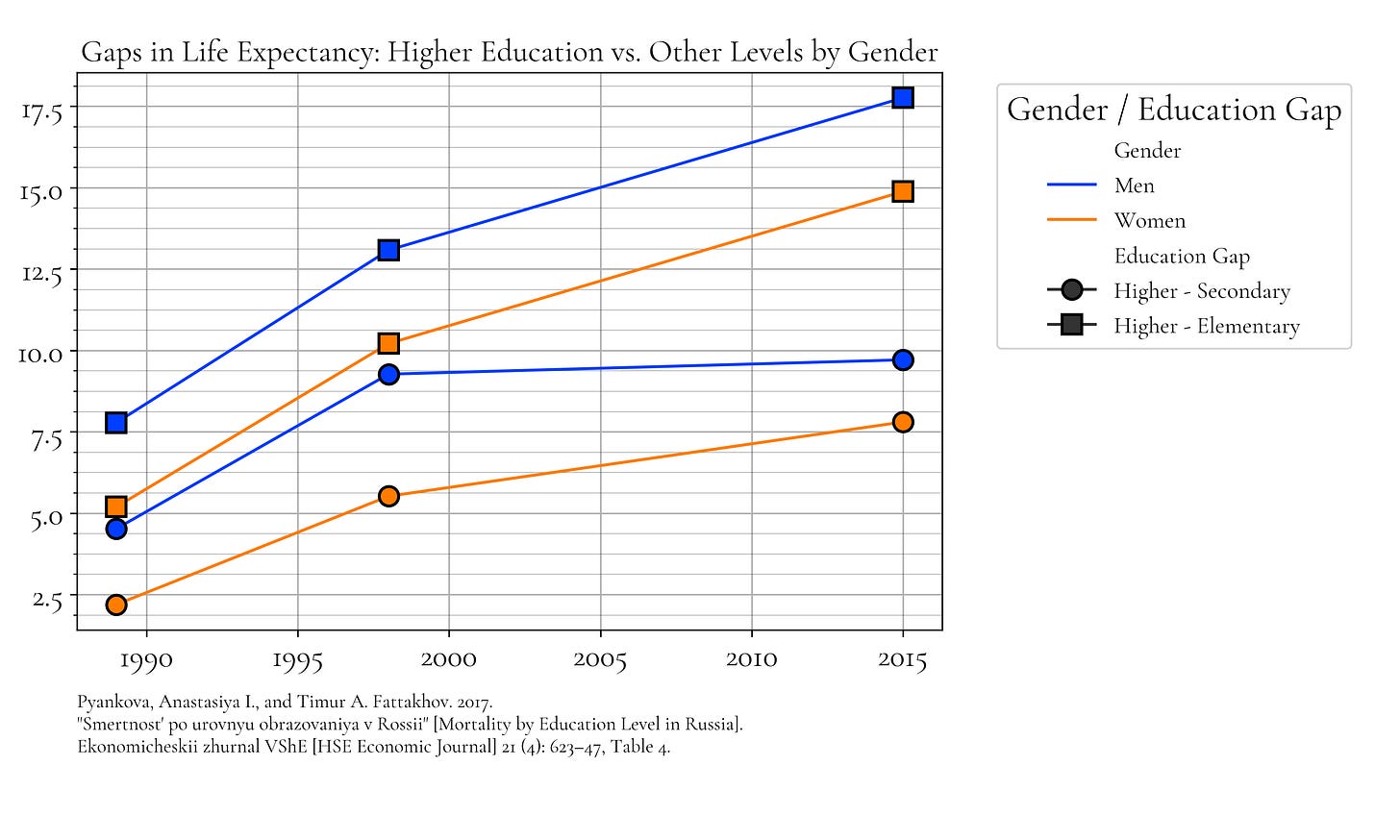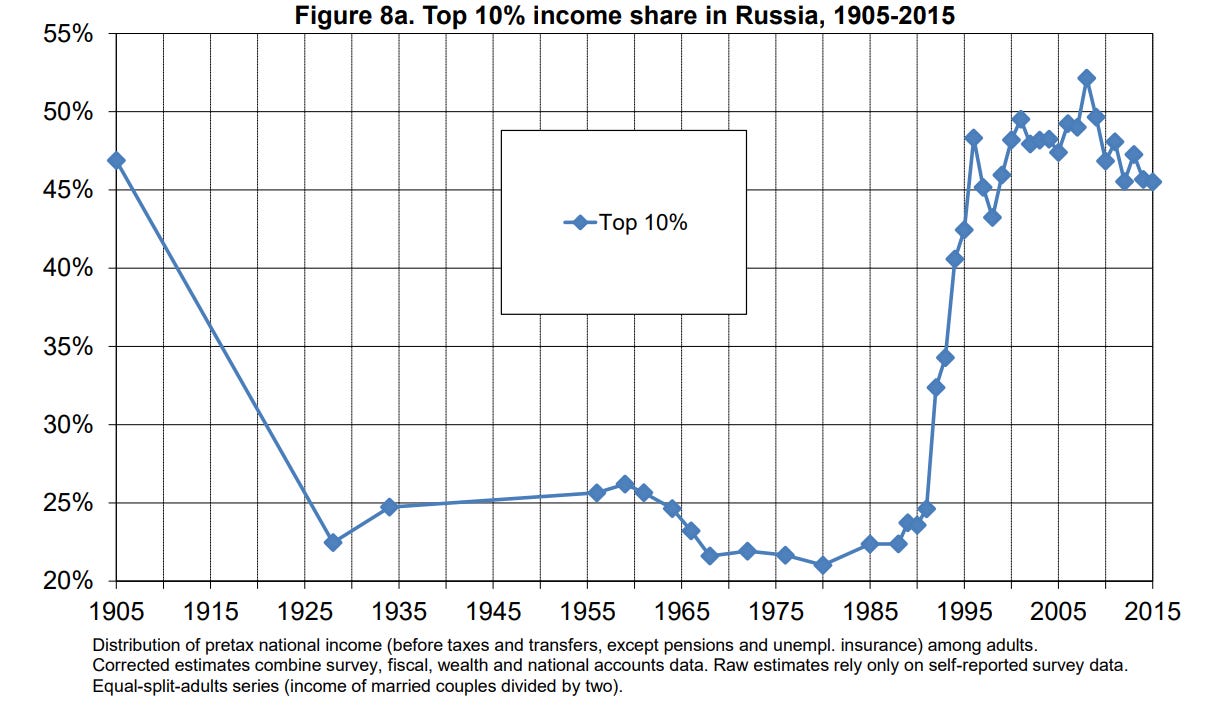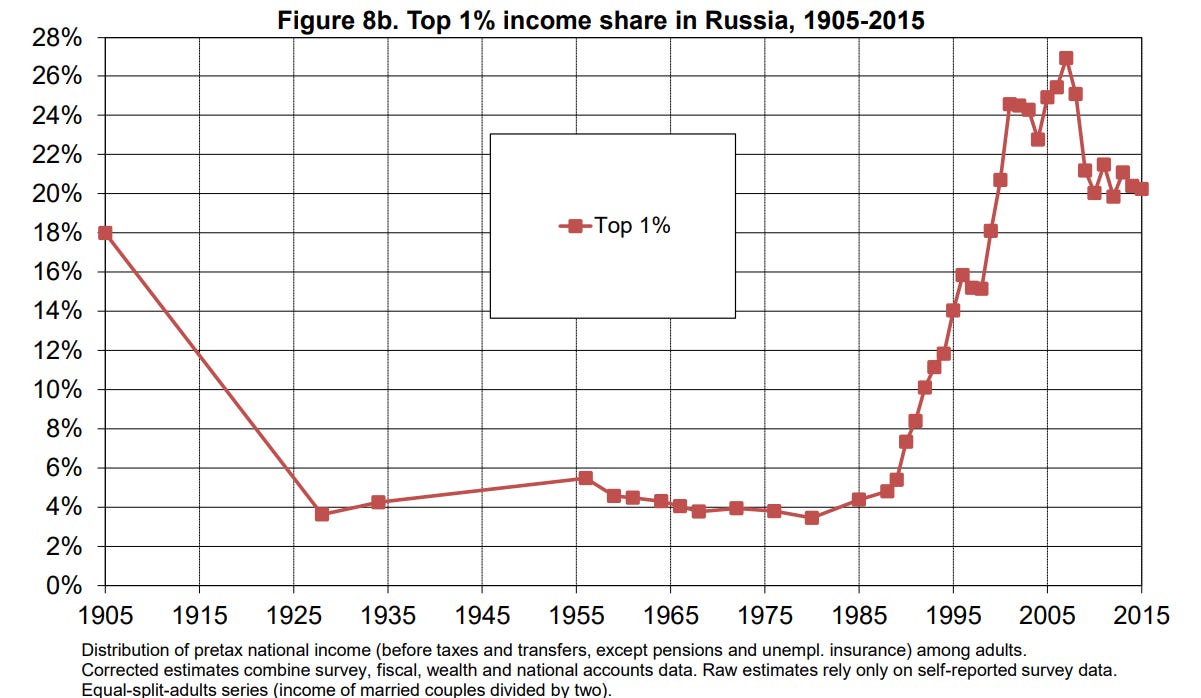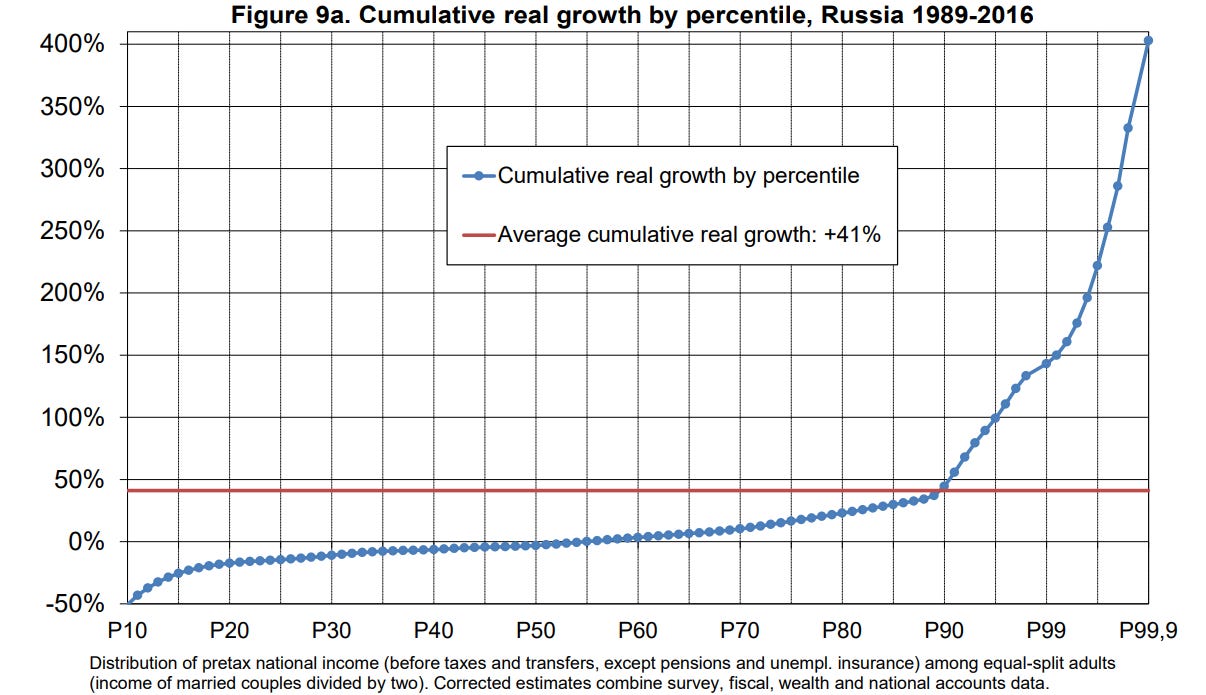Mortality Polarization by the Level of Education in Russia
Death and poverty are things that happen to other people
If you are an American, you have seen introduction of some heterogenity into mortality statistics. It can be Deaths of Despair and the Future of Capitalism from Angus Deaton with a graph about mortality of people without a higher education or the discourse about the racial mortality (with Latinos and Asians living longer than the African Americans).
You have probably also seen the graphs about the awful Russian life expectancy and how it has been declining since the 90s until the mid 2000s. A novel idea that you can learn from the disaggregated data for Russia is that people with a higher education just didn’t have any great decline in a life expectancy in the 90s. They had a moderate decline which returned them back to the lower levels that existed in years prior to an anti-alchol campaign. Their life expectancy started to grow rapidly by the mid-90s. The gap between the different levels of education has been increasing ever since.
One should be obviously cautious because the higher education is not a permanent characteristic, and a larger group of people is getting selected into it for an each cohort.
A first paper, The Widening Gap in Mortality by Educational Level in the Russian Federation, 1980–2001, covers the data from the 80s to early 2000s:
The second one, Mortality by Educational Level in Russia, updates it into 2010s.
Now we can combine it with a famous paper about income inequality from Novokmet, Piketty, and Zucman about inequality which also covers the years from the mid-1980s to 2016 as the life expectancy paper above. It shows us that the experiences of transition were widely different for the top and the bottom. I will come back to this paper and to measuring Russian income inequality in general in the future, but for now you should think that people in the top 10%/1% are not only earners of capital income as some assume, but also labor income and a lot of inequality comes from raising labor income differences.
Sources:
Anastasiya I. Pyankova and Timur A. Fattakhov, "Mortality by Educational Level in Russia," HSE Economic Journal 21, no. 4 (2017): 623–647, https://ej.hse.ru/data/2017/12/28/1160683586/%D0%9F%D1%8C%D1%8F%D0%BD%D0%BA%D0%BE%D0%B2%D0%B0.pdf.
Michael Murphy et al., "The Widening Gap in Mortality by Educational Level in the Russian Federation, 1980–2001," American Journal of Public Health 96, no. 7 (2006): 1293–1299, https://doi.org/10.2105/AJPH.2004.056929.
Novokmet, Filip, Thomas Piketty, and Gabriel Zucman. "From Soviets to Oligarchs: Inequality and Property in Russia, 1905-2016." NBER Working Paper No. 23712. National Bureau of Economic Research, August 2017. https://www.nber.org/papers/w23712.







This reminds me of the issues with US statistics. For example, American liberals will lament Scandinavia's superior statistics compared to the US, but forget the fact that if you exclude black populations or southern populations, you suddenly get life expectancy/crime/health/education/income/etc. on par with the best European nations.
For Russia specifically, this makes a lot of sense. From my own experience, I have a hard time imagining that folks who got into the newly integrated field of accounting or entrepreneurs who founded telecom companies had the same lite expectancy as laid off factory workers.